The history of forest work runs parallel to that of the human race. For thousands of years the forest was linked to the development, problems and evolution of civilisation. In time the dark, threatening forest thicket became a useful timber supplier. The forest was tamed, so that today it is not only an important economic factor, but it also fulfils various functions such as protection or recreation.
For hundreds of years the lumberjack’s job was one of the lowliest, at the bottom of the social ladder. This only changed with the introduction of the modern chainsaw. This improved the lumberjack’s social prestige and self esteem. A disdained day labourer became a respected machine operator and specialist.
From the axe to the saw
The axe has the oldest tradition of all wood cutting tools used by humans. Its use reaches so far back in human history that it’s form in stone, copper, bronze and iron reflects the different forms of culture. It remained one of the most important and widely used tools for felling trees right into the 19th Century.
Around 5000 B.C. Germanic tribes invented the first saw. They nicked small teeth into half moon shaped flints. Whether these saws were used for working on wood is not known. After the discovery of copper this was used, in the form of bronze, to produce axes and saws (with axes not only could trees be felled, but also adversaries). Around 750 B.C. iron replaced bronze as a working material but saws remained out of bronze for many centuries. However, they were used less in the forests and more by artisans, doctors and surgeons.
There is no information on other uses of the saw up until the 8th Century A.C. From this time on they were used by artisans but not by lumberjacks. Up until the 16th Century there is no proof, that hand saws were used in forestry work. On the other hand, saw mills, which cut trunks into planks, had already been around for some time in the forest. Around 1500 Leonardo da Vinci also spent some time on saws. He sketched – as far as is known – the first saw teeth which worked both by pulling and pushing. Up until now the tools had worked either by pushing (Europe) or by pulling (Asia).
Around 1800 the first circular and band saws were produced in England. At this time there was still a division of work between the axe and the saw: the felling and debranching was carried out using an axe, and the cutting to length was done using a saw. This inferior role of the saw remained for a long time. To some extent the saw was unknown and in certain places the felling of trees using a saw was forbidden. On the other hand in 1752 Empress Maria Theresa decreed that trees should no longer be felled "in the old way with the chopper, but with the saw near to the roots", so as, on the one hand to have less wastage of timber and on the other a better fertilisation (saw dust decomposes quicker than wood shavings). This decree like many others was ignored.
This was because kneeling down was against the body motoric of lumberjacks at that time. On top of this saws were about six times more expensive than axes. Lumberjacks could not afford them. Employers then provided the saws, which meant that lumberjacks sank from being self employed artisans to wage workers. Timber thieves however preferred the saw because in comparison to the axe it was a quieter tool to work with. This led to timber thefts using a saw being punished harder than those using an axe.
Although the saw was already known in antiquity (Egypt, Rome), it was only widely put into use in the forest in central Europe towards the middle of the 18th Century. The saw brought not only an increased yield in timber but also many other advantages for forestry owners. However for the lumberjacks they brought mainly disadvantages. In the middle of the 19th Century there were also forward looking individuals who built mechanical saws, which could be taken into the forests (e.g. drag saws). Most of these inventions were however very heavy, unwieldy and never really progressed beyond the prototype stage. The same happened to machines which were powered by steam engines fuelled with the resulting wood waste.
The development of the motorized saw
It was not until the 1920’s that someone invented a proper chainsaw. Three names should be mentioned: Wolf (USA), Westfelt (Sweden) and Stihl (Germany). The latter is the largest and oldest chain saw producer in the world. (founded 1926, annual turnover 2004, 1,6 Mia. Euro). In the beginning the idea was to make heavy forestry work lighter using a machine. This should also lead to an increase in productivity and therefore profit. The main phases in the development of the chainsaw were:
- 1926 Stihl developed the first electro-chainsaw
- 1927 Dolmar developed the first petrol chain saw (source: Dolmar)
- 1950 the first one-man chain saw
- 1964 antivibration system
- 1972 chain brake
- 1982 quickstop (automatic chain brake)
- 1989 Catalyser
- 1991 Automatic start
At the end of the 1920’s the first petrol chainsaws were produced. In the beginning they were 2 men chainsaws. This was due to technical considerations and the similarity to traditional saws. Although the chainsaw made forestry work much easier it took decades for it to establish itself. The main reasons for this were the weight of the machines, their unwieldiness and susceptibility to breaking down, as well as the large amount of energy needed by two people. The first two-man chainsaw weighed over 60 Kilos, but progress was not to be stopped. The aim was to develop a lighter, more powerful saw which could be used by one person.
The first one-man chainsaw was produced in 1950 and it was still quite heavy. In 1959 they weighed about 12 Kg (today chainsaws weigh around 4-5 kg, heavy duty chainsaws between 7 and 9 kg) and soon people were raving: "the one-man chainsaws are taking over the forests and timber yards, will the singing of the saw be replaced by the rattling of chainsaws?" (Niggli). At the end of the 50’s there was a shortage of lumberjacks and the hope was that the chainsaw would make forestry work more attractive for young people. As with the change over from the axe to the saw, the introduction of the chainsaw also had its opponents some of whom only wanted to impose restrictions. For instance, in 1957, it was said that it was not worth while using chainsaws for lugging on pine wood and that a clean cut debranching could only be carried out using an axe. Another example were the sinking piecework rates which came about due to the increased efficiency of the chainsaw and which led to the lumberjacks returning to the use of the hand saw.
Fotos: Manfred Pfeifer, www.motorsaegensammler.de
Working with the chainsaw
It stands to reason that working with a chainsaw is dangerous. There is approximately one accident per 1100m³ of worked wood. The most exposed parts of the body are the left leg and the left arm. The main cause of accidents is the “kickback” (a sudden rising of the saw when the nose and chain meet the wood at a critical angle) and stumbling. White finger syndrome can be caused by vibrations of the machine. This is a circulation problem in the hands. A survey in 1981 showed that irreversible hearing damage is relatively seldom. Due to the technology used it is however difficult to reduce the noise level. As for exhaust fumes, there are no known health problems, but little is known about the long term effects.
Translation: Dawn Meister, Stallikon
Literature
- Feldhaus, F.: Die Säge. Berlin 1921
- Kilian, H.: Vom Schinderblech zum Diebeswerkzeug. Ein Rückblick auf die 400jährige Geschichte unserer Waldsäge. Cbl. ges. Forstwesen 97 (1980): 65-101
- Mantel, K.: Wald und Forst in der Geschichte. Allfeld-Hannover: Verlag M+H Schaper 1990
- Niggli, P.: Einmann-Motorkettensägen. Bündner Wald 12 (1958-1959), 4: 83-86
- Radkau, J.: Holz. Ein Naturstoff in der Technikgeschichte. Reinbeck: Rowohlt 1987
- Steinlin, H.: Einsatz von Einmannmotorsägen in der schweizerischen Forstwirtschaft. Schweizerische Anstalt für das forstl. Versuchswesen. Mitteilungen, Band 32, 1956-57, S.147-201
- Winkelmann, H.G.: Die Verwendung der Motorsäge in der Holzhauerei. Forstwirtsch. Zentralstelle der Schweiz. Solothurn 1957

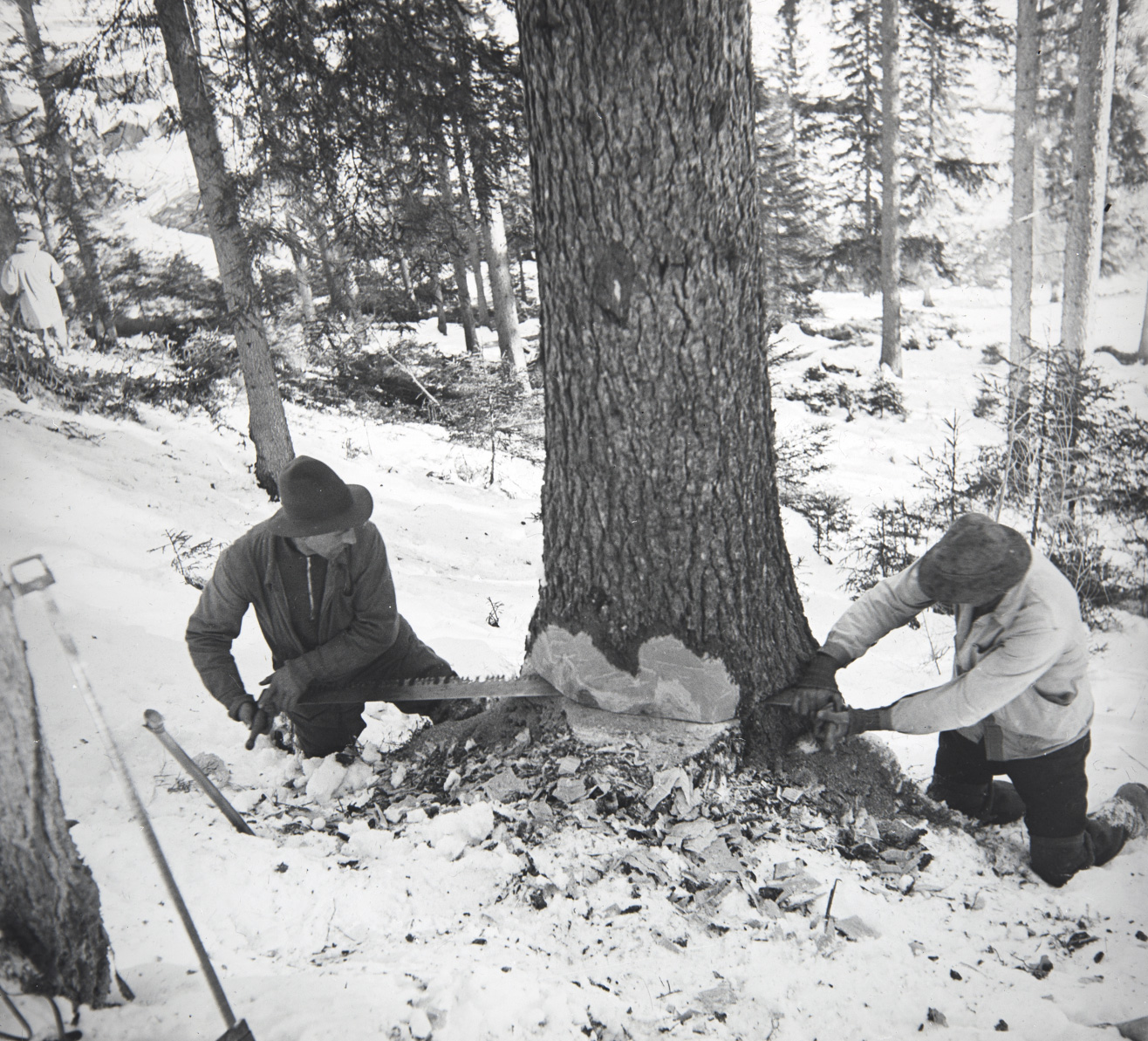
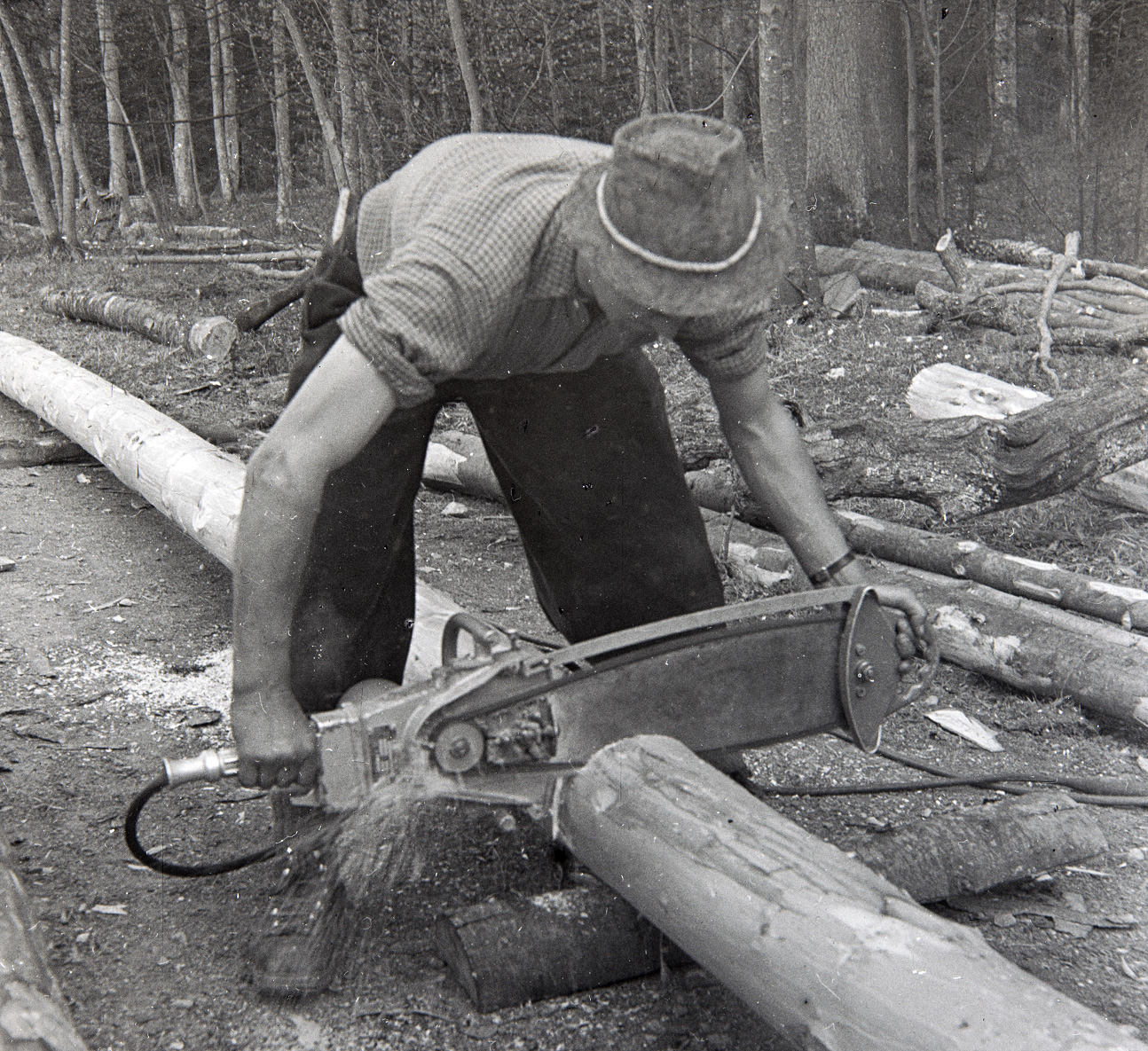

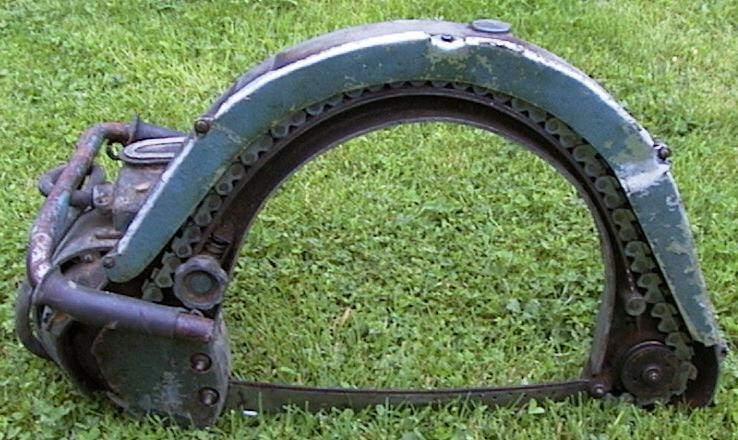

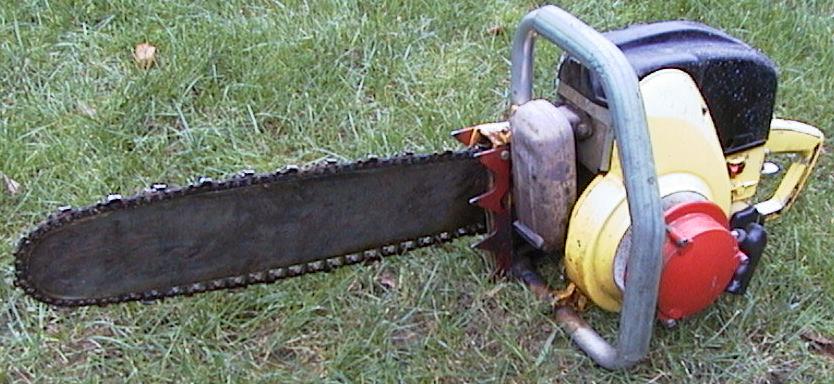
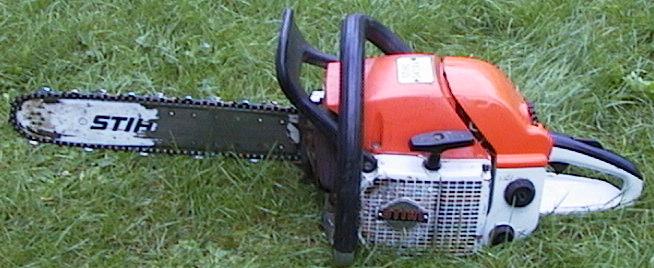
![[Translate to English:] [Translate to English:]](/assets/_processed_/7/d/csm_wsl_helikoptersaege_baumsaege_cdcbd0795d.jpeg)